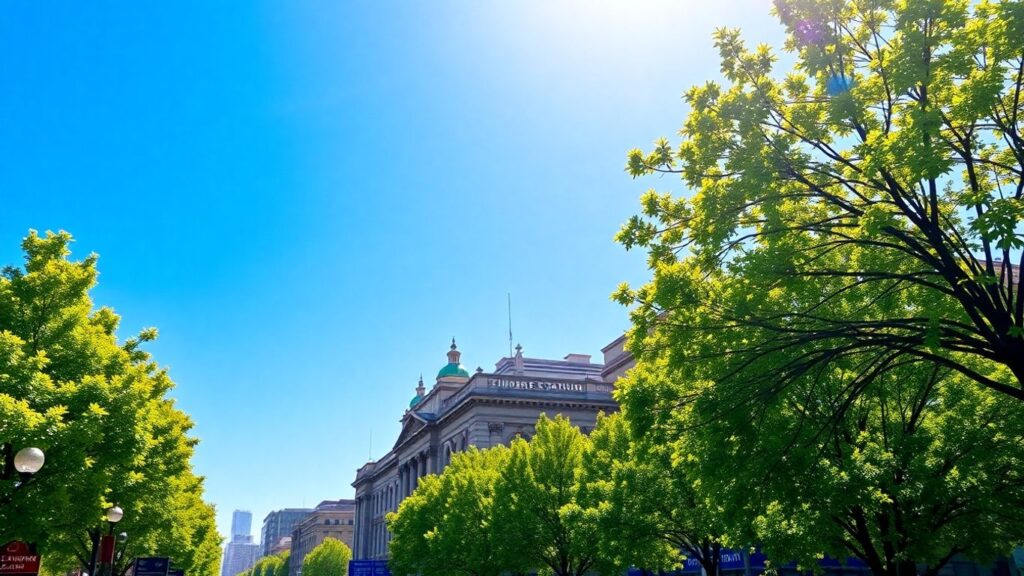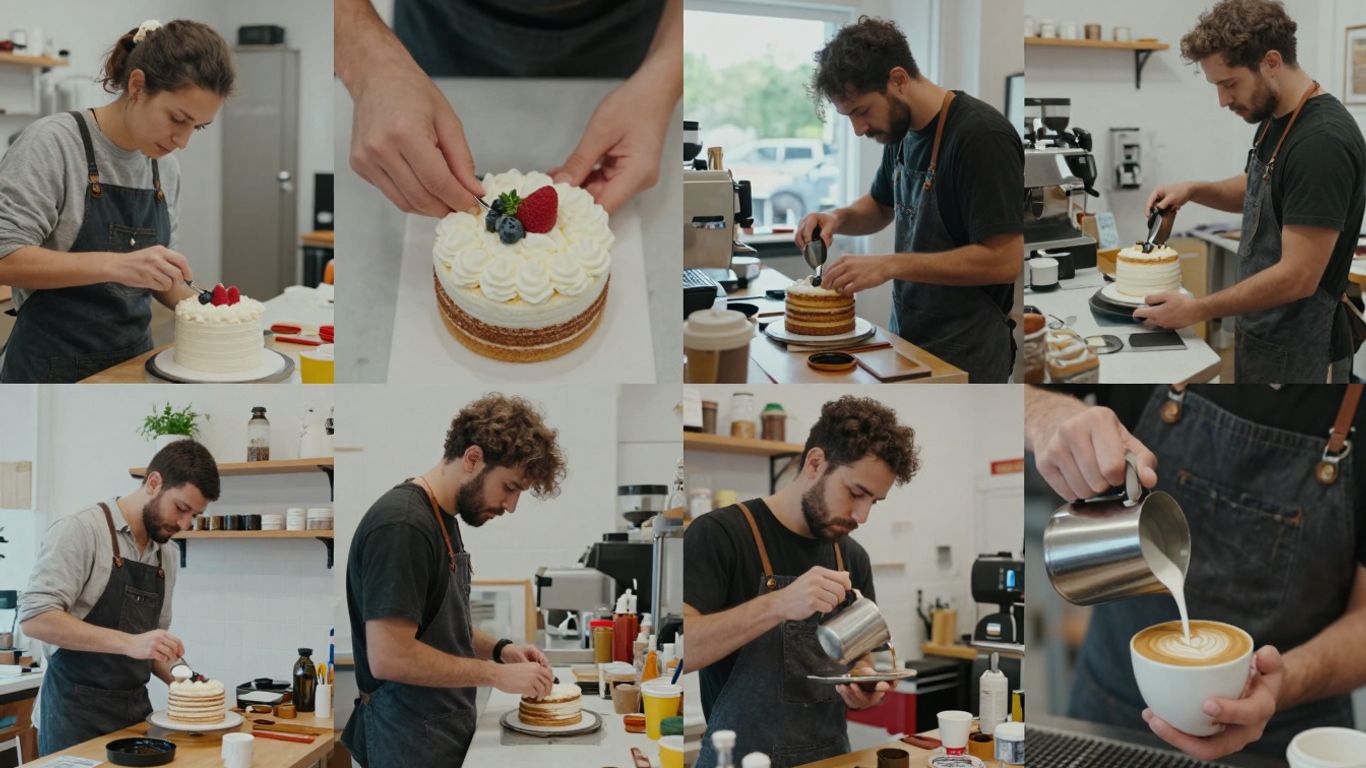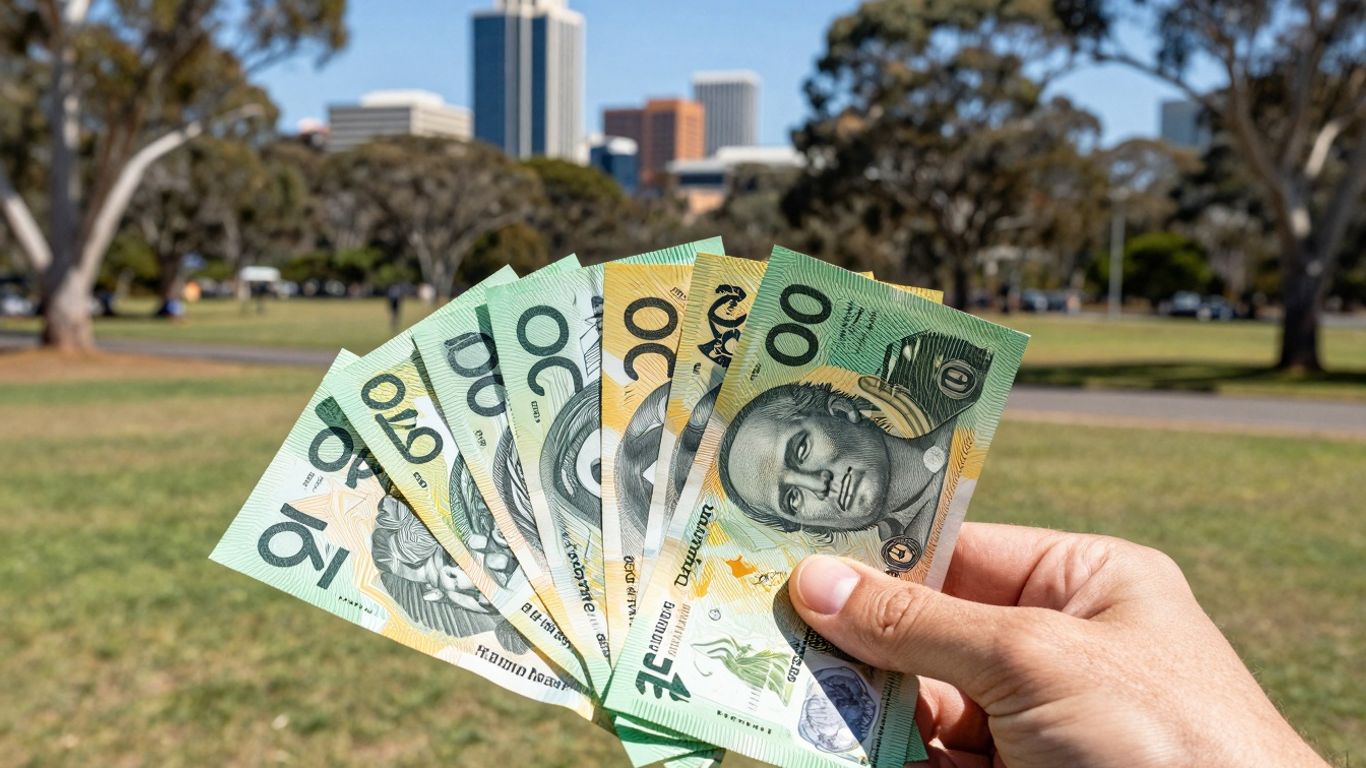Melbourne, Australia, is a fantastic city with heaps to offer, from cool laneways and great food to stunning coastlines nearby. Planning a trip here is exciting, and knowing a bit about staying safe can make your adventure even better. This guide is all about helping you explore Melbourne with confidence, covering everything from getting around to enjoying its many sights, so you can just focus on having a brilliant time.
Key Takeaways
- Melbourne is generally a safe city, but it’s always smart to be aware of your surroundings, especially at night or in busy areas.
- Public transport, including trams and trains, is a reliable way to get around; just keep an eye on your belongings.
- Driving in Melbourne means sticking to the left and being mindful of toll roads, which often use electronic payment systems.
- Exploring different neighbourhoods like the CBD, Fitzroy, and St Kilda is easy, but always have a general idea of where you’re going.
- Be prepared for Melbourne’s changeable weather by packing layers and a light waterproof jacket, no matter the season.
Understanding Safety in Melbourne Australia

Melbourne is generally a safe city for travellers, but like any major urban centre, it pays to be aware and prepared. Thinking about safety beforehand means you can relax and really soak in everything this fantastic city has to offer, from its bustling laneways to its beautiful parks.
When you’re exploring a new place, a few common-sense steps go a long way. It’s always a good idea to let someone know your general plans, especially if you’re heading off the beaten path. This doesn’t mean you need to check in every hour, but having a rough idea of where you’ll be and when can be helpful.
- Stay Informed: Keep an eye on local news for any alerts or advisories that might affect your plans.
- Respect Local Customs: Be mindful of cultural differences and local etiquette. A little respect goes a long way in making positive connections.
- Emergency Contacts: Have important phone numbers handy, including local emergency services (000 in Australia).
Staying Aware in Urban Environments
Melbourne’s city centre is vibrant and busy, which is part of its charm. However, this also means being mindful of your surroundings, particularly in crowded areas or when using ATMs. Stick to well-lit areas, especially after dark, and be aware of who’s around you. If you’re using an ATM, try to use one inside a bank or a busy, well-lit shopping centre rather than a quiet street.
Being alert doesn’t mean being paranoid; it just means being present and aware of your environment. This simple shift in mindset can help you avoid common tourist pitfalls and enjoy your time more.
Personal Safety Tips for Solo Explorers
Travelling solo in Melbourne is a popular choice, and for good reason – it’s a welcoming city. However, taking a few extra precautions can boost your confidence.
- Night Safety: While many areas are safe, avoid walking alone in unfamiliar or poorly lit streets late at night. If you need to get around, consider using ride-sharing services or taxis.
- Valuables: Keep your belongings secure and out of sight. A small, anti-theft bag can be a good investment.
- Trust Your Gut: If a situation or a place feels off, it probably is. Don’t hesitate to leave or seek help if you feel uncomfortable.
Navigating Melbourne’s Transport System Safely
Getting around Melbourne is pretty straightforward, but like any big city, it’s good to know a few things to make your travels smooth and safe. Whether you’re planning to drive yourself or rely on public transport, here’s the lowdown.
Melbourne’s public transport network is pretty extensive, with trams, trains, and buses covering most areas. It’s generally a safe way to get around, but a bit of awareness goes a long way.
- Trams: These are iconic and super handy for getting around the city centre and inner suburbs. Always wait on the footpath until the tram has stopped completely before boarding. Keep your belongings close, especially when it’s busy.
- Trains: The train system connects the city to the wider suburbs and beyond. Stations are usually well-lit and have staff presence, but it’s wise to stick to well-populated platforms, especially late at night. Keep an ear out for announcements.
- Buses: Buses fill in the gaps where trams and trains don’t go. Similar to trains, be mindful of your surroundings at bus stops and when boarding.
Myki is your best friend for public transport – it’s the smart card you’ll need for all trams, trains, and buses. You can buy and top it up at stations, convenience stores, or online. Just remember to touch on at the start of your journey and touch off if you’re using a train or bus.
Public transport is a fantastic way to see the city without the stress of parking or traffic. Plus, it’s often the most budget-friendly option.
If you’ve decided to hire a car, Melbourne’s roads are generally well-maintained. However, traffic can get pretty hectic, especially during peak hours.
- Drive on the left: This is the big one for anyone not used to it. Always remember to keep left.
- Speed limits: These are clearly signposted in kilometres per hour (km/h). Pay attention, as they can change quite a bit, especially as you move from freeways into suburban or city areas.
- Mobile phones: Using your phone while driving is a big no-no unless it’s hands-free. Seriously, don’t risk it – the fines are hefty.
- Roundabouts: These can be a bit tricky. Always give way to traffic already in the roundabout, and signal when you intend to exit.
Traffic congestion is a real thing here, particularly between 7-9 AM and 4-6 PM on weekdays. If you can, try to plan your drives outside these times. Using a GPS app like Google Maps or Waze is highly recommended; they’ll help you avoid traffic jams and find the quickest routes.
Melbourne has a network of toll roads, like CityLink, which can save you a lot of time, especially if you’re travelling between the airport and the city, or heading out to the suburbs. The catch? They aren’t free.
Tolls are collected electronically. If you’re hiring a car, the rental company will usually have a system in place. You might get a temporary pass, or they might charge your credit card directly after your trip. It’s super important to clarify this with the rental company before you drive off. If you don’t pay on time, the fines can add up very quickly, and the rental company will likely pass those on to you, plus an admin fee.
If you want to avoid tolls altogether, most GPS apps can be set to find toll-free routes. It might take a bit longer, but it’s a good way to keep costs down if that’s a priority.
Exploring Melbourne’s Neighbourhoods with Confidence
Melbourne’s a city that really rewards a bit of wandering, and its different areas all have their own vibe. You can totally explore them safely and have a ripper time doing it.
Key Areas and Their Unique Characteristics
Each part of Melbourne has its own flavour. The Central Business District (CBD) is the heart of it all, packed with history, grand old buildings, and those famous laneways. It’s super easy to get around here, and you’ll find everything from bustling shopping streets to quiet little cafes tucked away. Then you’ve got places like Fitzroy and St Kilda, which are totally different but just as cool.
Tips for Exploring the CBD and Laneways
When you’re in the CBD, it’s a good idea to have a rough plan. You could start at Flinders Street Station, wander over to Federation Square, and then get lost (in a good way!) in the arcades like the Block Arcade. Bourke Street Mall is always busy, and grabbing a coffee on Collins Street is a classic Melbourne experience. The laneways are where the magic happens – think street art, hidden bars, and quirky shops. Just keep your wits about you, especially when it’s crowded. A good map or a handy app can help you find your way, and remember that many of these spots are close to public transport, making it easy to hop between them.
- Start with a loop: Try linking Parliament House, the Royal Arcade, and a walk along the Yarra River. It’s a pretty straightforward route.
- Look up! The architecture in the CBD is amazing, from the old Victorian facades to the modern skyscrapers.
- Embrace the unexpected: You never know what you’ll find down a laneway – a cool cafe, a pop-up market, or some incredible street art.
Melbourne’s laneways are like its secret veins, pulsing with art, food, and hidden gems. Don’t be afraid to duck down one that catches your eye; you might just discover your new favourite spot.
Discovering Fitzroy and St Kilda’s Charm
Fitzroy is all about that bohemian, creative energy. Think colourful murals, independent boutiques, and heaps of cool cafes where you can just chill. Brunswick Street is the main drag, but don’t forget to explore the smaller side streets for art galleries and unique finds. It’s a great place to just soak up the atmosphere. Then, head over to St Kilda. It’s got a completely different vibe – more beachy and relaxed. You can stroll along the promenade, check out the iconic Luna Park, and browse the shops on Acland Street. It’s a lovely spot for a sunset walk or to grab some famous St Kilda cake.
- Fitzroy: Great for street art, vintage shops, and live music venues.
- St Kilda: Perfect for beach walks, people-watching, and enjoying the seaside atmosphere.
- Getting between them: Trams make it pretty easy to travel between these neighbourhoods and back to the city centre.
Maximising Your Melbourne Experience Safely
Alright, so you’re in Melbourne and you want to make sure you’re getting the most out of it without any drama, right? It’s all about being smart and a little bit prepared. Planning your days thoughtfully is key to a great trip.
First off, let’s talk about getting around. Melbourne’s public transport is pretty decent, especially the trams. Grabbing a 24-hour transit pass can be a real money-saver and makes hopping between neighbourhoods a breeze. You can get from the CBD to places like Fitzroy or St Kilda pretty quickly. Just keep an eye on the schedules, especially if you’re out late on a weekend – sometimes things change.
When you’re planning your itinerary, it’s a good idea to group your activities by neighbourhood. Trying to zig-zag across the city all day can be exhausting and eats up precious exploring time. Maybe dedicate a morning to the CBD, checking out the laneways and arcades, and then head to Fitzroy in the afternoon for its street art and cool vibe. Or spend a day exploring the beachside charm of St Kilda.
Here’s a quick rundown of how to pace your days:
- Morning: Start with a coffee and a stroll through the CBD’s historic arcades.
- Lunch: Grab something tasty from the Queen Victoria Market or a local cafe.
- Afternoon: Explore a different neighbourhood like Fitzroy or Carlton.
- Evening: Enjoy dinner and maybe catch some live music.
Melbourne’s weather can be a bit of a wild card. Seriously, you can get four seasons in one day. So, always pack layers. A light jacket and maybe a small umbrella are your best friends here. Mornings can be quite cool, even in summer, and then it can heat up pretty fast. Being prepared means you won’t be caught out by a sudden shower or a chilly breeze.
Don’t forget to factor in some downtime. Trying to cram too much into each day can lead to burnout and make you less aware of your surroundings. It’s better to have a few really good experiences than a rushed, overwhelming time.
Budgeting is also part of the safety equation, believe it or not. Knowing where you can grab affordable eats, like at the Queen Victoria Market, or finding free activities, like street art tours, means you’re not stressing about money. This frees you up to actually enjoy the city. If you’re thinking about venturing out to the coast, remember to always swim between the flags at patrolled beaches where lifeguards are present. It’s a simple rule that can make a big difference.
Day Trips and Excursions from Melbourne

Melbourne’s a ripper city, no doubt about it, but there’s a whole heap of amazing stuff to see just a bit further afield. Getting out of the city can really give you a different feel for Victoria, and honestly, some of the best experiences are just a drive away. Whether you’re keen on stunning coastlines, rolling vineyards, or wild national parks, there’s something for everyone.
Safe Travel to Coastal and National Parks
Heading out to places like the Great Ocean Road or the Grampians is a must-do. The scenery is just incredible. When you’re planning these trips, especially if you’re driving yourself, make sure your car’s in good nick. Check the tyres, oil, and water before you head off. It’s also a good idea to let someone know where you’re going and when you expect to be back, just in case.
- Pack Smart: Always bring plenty of water, snacks, sunscreen, a hat, and a basic first-aid kit. Weather can change pretty quickly, especially near the coast or in the mountains.
- Check Conditions: Before you leave, have a look at the weather forecast and any park alerts. Some roads might be closed after heavy rain, or there could be fire bans in place during warmer months.
- Stay on Tracks: In national parks, stick to marked trails. It’s safer for you and better for the environment. You don’t want to get lost or disturb the local wildlife.
When exploring natural areas, remember you’re a visitor. Take only photos, leave only footprints. It sounds simple, but it makes a big difference to preserving these beautiful spots for everyone.
Exploring the Outback Responsibly
While Melbourne itself isn’t exactly ‘outback’, day trips can take you to some drier, more rugged areas. If you’re venturing into these parts, preparation is key. Think about the distances involved – you might not see another car for a while. Ensure you have enough fuel, water, and food. A good map, not just relying on your phone, is also a smart move as reception can be patchy.
Group Travel and Cost-Sharing for Excursions
Doing day trips with mates or other travellers you’ve met can be a fantastic way to see more and save a bit of cash. Splitting the cost of fuel and maybe even hiring a slightly bigger car can make a big difference. It also means you’ve got company, which is always nice, and you can share the driving duties.
- Car Hire: If you’re hiring a car, compare prices from different companies. Look for deals that include insurance, and make sure you understand the fuel policy.
- Itinerary Planning: Chat with your group about what everyone wants to see and do. Trying to cram too much in can be stressful. A relaxed pace is usually more enjoyable.
- Budgeting: Agree on a rough budget beforehand. This covers things like fuel, entry fees, and any meals or snacks you plan to buy along the way. It avoids awkward conversations later on.
Organising a group trip can make exploring further afield much more affordable and fun. It’s a great way to bond and create some solid memories without breaking the bank.
Wrapping Up Your Melbourne Adventure
So, Melbourne is a pretty cool place, right? It’s got a bit of everything, from busy streets to quiet little laneways. We’ve talked about getting around, staying safe, and just generally having a good time without too much stress. Remember to keep an eye on the weather – it can change fast here! Whether you’re hitting up the cafes, checking out a festival, or just wandering around, planning a little goes a long way. Most importantly, just soak it all in and enjoy exploring this awesome city at your own pace. You’ve got this!
Frequently Asked Questions
Is Melbourne a safe city for solo travellers, especially women?
Absolutely! Melbourne is known for being a really safe city for everyone, including solo female travellers. Locals are friendly and helpful. Just like anywhere, it’s smart to be aware of your surroundings, especially at night, and not to overdo it with drinks. But overall, you can feel pretty confident exploring on your own.
What’s the best way to get around Melbourne?
Melbourne has a fantastic public transport system with trams, trains, and buses that can get you almost anywhere. Trams are super handy for exploring the city centre and nearby spots. If you prefer more freedom, hiring a car is an option, but be ready for city traffic, especially during busy times. Using apps like Google Maps can help you find the quickest routes, whether you’re on public transport or driving.
Are there toll roads in Melbourne, and how do they work?
Yes, Melbourne has some toll roads that can save you time getting between different parts of the city and suburbs. You usually pay these electronically. If you rent a car, it might already have a tag, or you can get one. If you’d rather skip the tolls, just let your GPS know to find toll-free routes.
What should I pack for Melbourne’s weather?
Melbourne’s weather is famous for changing its mind quickly! It’s best to pack layers. Think a light waterproof jacket, a jumper or fleece, and comfortable walking shoes. Even on sunny days, mornings and evenings can be cool. An umbrella is also a good idea, just in case of a sudden shower.
How can I save money while exploring Melbourne?
There are heaps of ways to explore Melbourne without breaking the bank! Look out for free events and festivals, explore the city’s amazing street art, and enjoy affordable eats at local markets and cafes. Public transport is also a budget-friendly way to see the sights. Planning picnics in the parks is another great option!
What are some good day trips from Melbourne?
Melbourne is a great base for exploring! You can take a trip to see the stunning Great Ocean Road and the Twelve Apostles, visit the charming penguins at Phillip Island, or explore the beautiful wineries in the Yarra Valley. There are also national parks like the Grampians for hiking and nature lovers. Many tours are available, or you could even rent a car and go with friends to split the costs.





